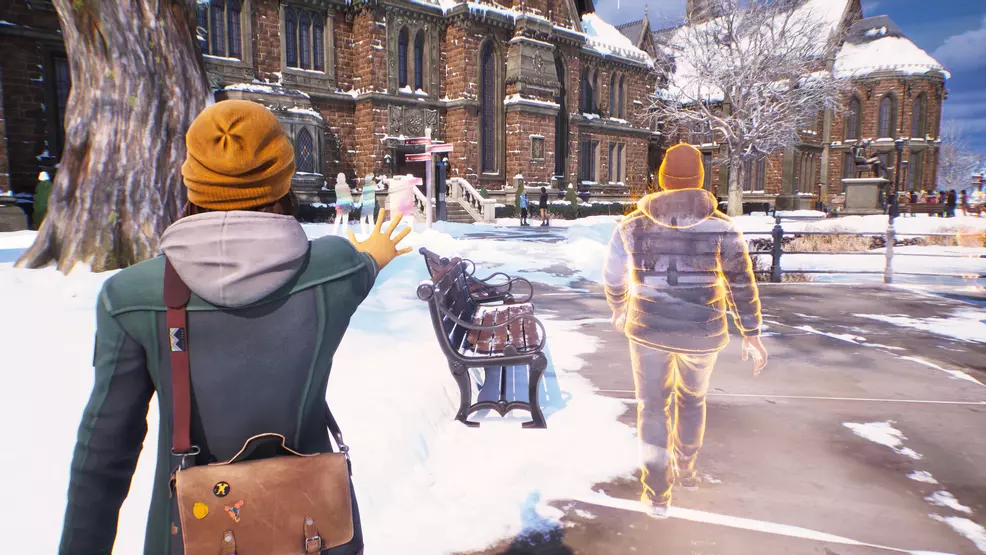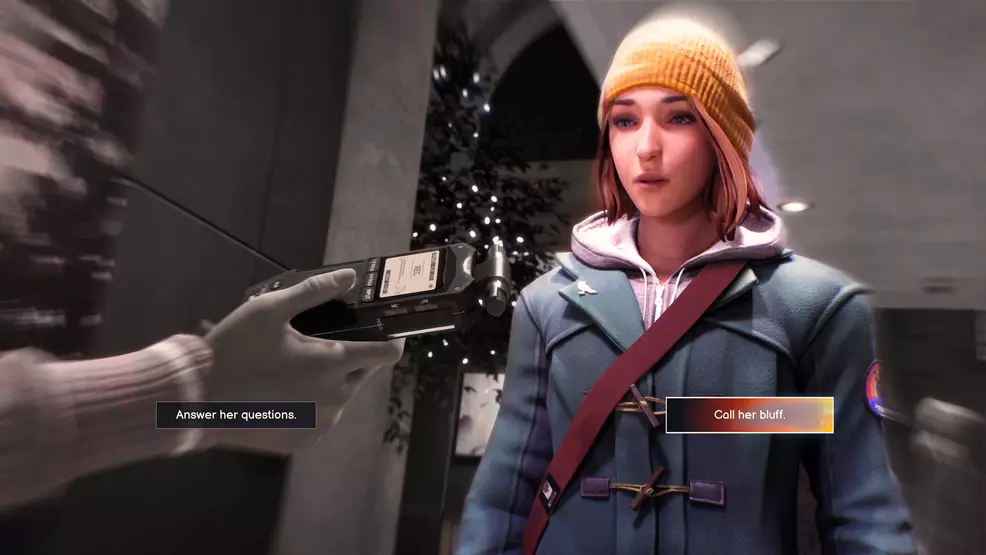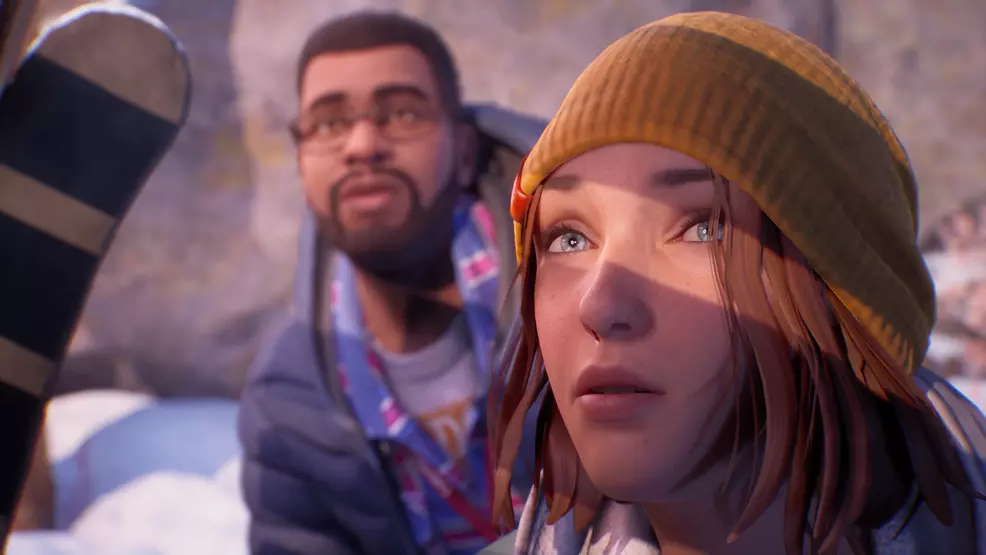Like most Life is Strange fans, my attention was immediately grabbed when Deck Nine Games revealed that the franchise’s latest installment, Double Exposure, would see the return of the series’ original protagonist, Max Caulfield. After stepping back into this world and experiencing Max’s latest adventure, my heart is happy. However, my experience with Life is Strange: Double Exposure was unfortunately marred by technical issues and awkward design choices.
Through the looking Max

Source: Square Enix
Set a decade after the events of the original Life is Strange, Double Exposure finds Max Caulfield working as a photographer-in-residence at Caledon University. After the murder of her close friend, Safi, Max sets out to discover the identity of her killer. This murder mystery takes a turn for the supernatural when Max gains the ability to access a parallel timeline that holds one key distinction: Safi is still alive.
Deck Nine Games manages to spin a compelling narrative in which Max once again uses her powers to help the people she cares about the most. The game follows a new cast of supporting characters, and they all feel fleshed out with unique motivations and ties to Max. My personal favorites of the bunch were Moses and Amanda. Still, there are plenty of callbacks to the original game, primarily through the social media feed and messaging app, that’ll put a smile on fans’ faces.
Games like this live and die on the quality of their story, and Life is Strange: Double Exposure managed to surprise me with a handful of unique twists throughout the campaign, and I remained on board when the story continued to lean into its fantastical side. Deck Nine has a reverence for Max Caulfield, and her return isn’t wasted.
Nearly every conversation you have in Life is Strange: Double Exposure allows you to choose from multiple responses. This mechanic remains unchanged, but I noticed a handful of inconsistencies during conversations that offer a variety of options. This was especially noticeable during exchanges where you can exhaust multiple dialogue options before ending the conversation. Characters would respond to something one way, and then completely change their tone as we parted ways. This has always been part of the cheesy movie aspect of these games, but it still took me out of a few moments.
Two different worlds

Source: Square Enix
Instead of rewinding time to fix past mistakes, Life is Strange: Double Exposure’s gameplay revolves around the navigation of the separate timelines, aptly titled Living World and Dead World. This is done through the Pulse and Shift abilities. Pulse gives Max a glimpse into the other universe, so that she can see and hear what’s happening there without actually interacting with them. Shift allows her to physically step into the other universe, swapping timelines. The latter can only be used at fixed points in the world.
Many of the game’s puzzles and objectives hinge on this dimension-hopping feature. Is an authority figure occupying an area you want to snoop around in? Check the other timeline. Want to eavesdrop on someone without being seen, listen from the safety of another dimension. The difference between characters and locations across worlds can range from minimal to radical, and it’s neat to have an extremely close juxtaposition.
One of the most impressive details comes in the environmental design and art direction of the Living and Dead worlds. The Living World is noticeably more vibrant, with warm colors, holiday decorations, and happy students. The Dead World is endlessly dreary, with a bitterly cold color palette reminiscent of Until Dawn. This world has a lack of holiday decorations, and social spaces are less occupied. It perfectly encapsulates how collective grief can affect a society.

Source: Square Enix
With how cool Max’s new powers are, it’s a shame that they’re completely bogged down by technical issues. Nearly every time I activated Pulse, my game’s performance took a hit, with a noticeable framerate drop on my Xbox Series X. This also happened when loading into new areas of the map. As you talk to characters or watch cutscenes, you’ll notice random background textures popping in.
There are also several instances where character models awkwardly snap into different positions when you initiate a conversation with them or clip with other items in the world. In one instance, I was talking to a character while they stood in the middle of a table. Lastly, my game fully crashed three or four times during my playthrough.
Life is Strange: Double Exposure’s technical problems are simply frustrating. As someone who has a decent tolerance for non-critical performance issues, these issues are hard to ignore and took me out of the story on several occasions. It also made me less inclined to activate Pulse unless an objective required it.
Deadly snapshot

Source: Square Enix
The original Life is Strange was enough to cement Max Caulfield as one of my favorite modern video game protagonists, and Double Exposure offers a beautiful continuation of her journey. She’s still the deeply goofy and empathetic artist that we fell in love with nearly a decade ago, and this new adventure further explores her personality and beliefs. Jumping back into her story all these years later felt like catching up with an old friend.
On the other hand, it’s impossible to make your way through Life is Strange: Double Exposure without performance issues interfering with the experience. It’s ironically right in line with the game’s theme of duality, with the Living and Dead worlds serving as metaphors for what it’s like playing through the newest Life is Strange game.
This review is based on an Xbox Series X code provided by the publisher. Life is Strange: Double Exposure launches on October 29, 2024, for Xbox Series X|S, PS5, and PC.
Life is Strange: Double Exposure
- Compelling supernatural mystery
- Beautiful continuation of Max's story
- Endearing characters
- Harsh performance issues
- Stilted dialogue in some places
-
Donovan Erskine posted a new article, Life is Strange: Double Exposure review: Framed


